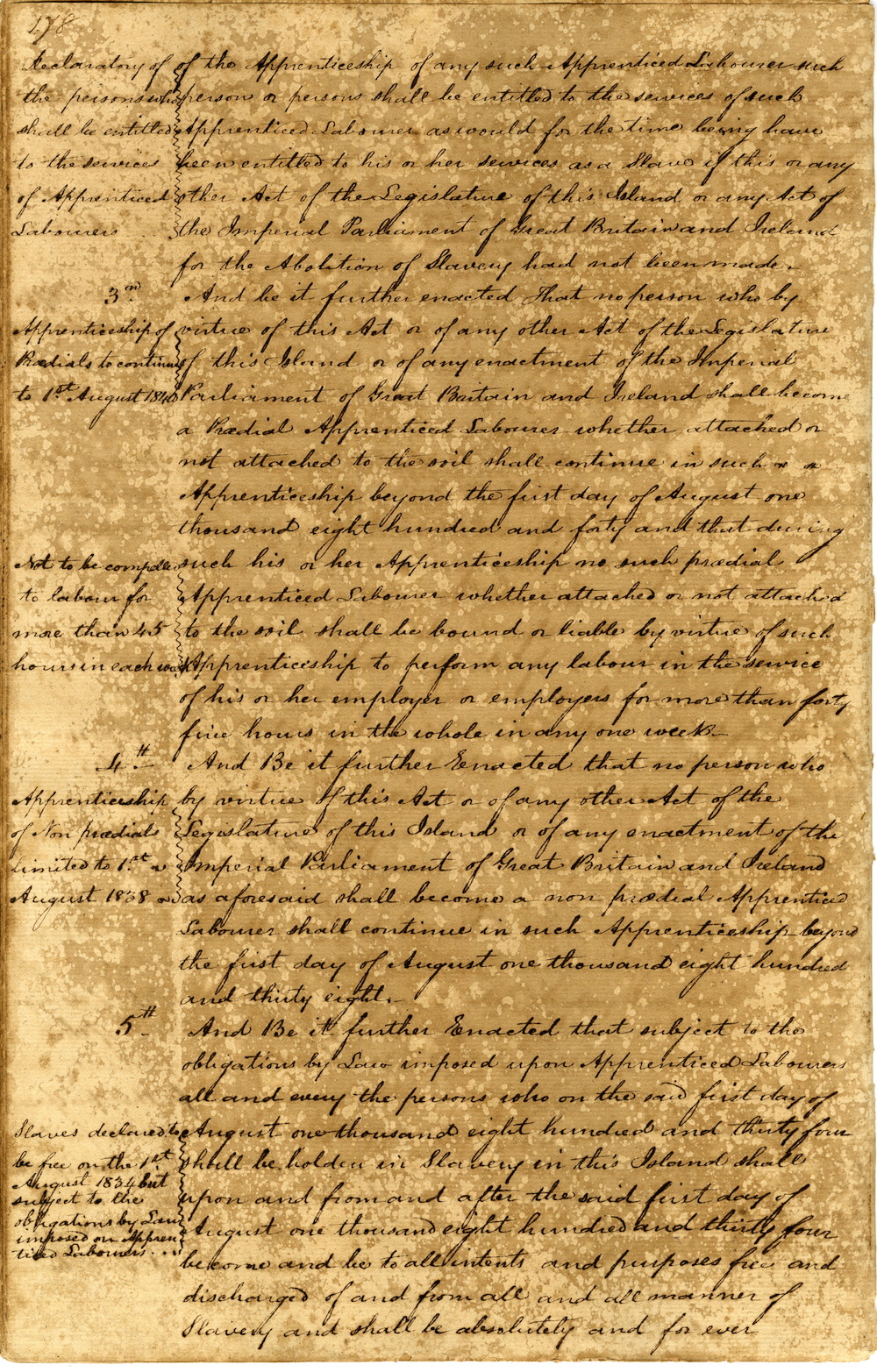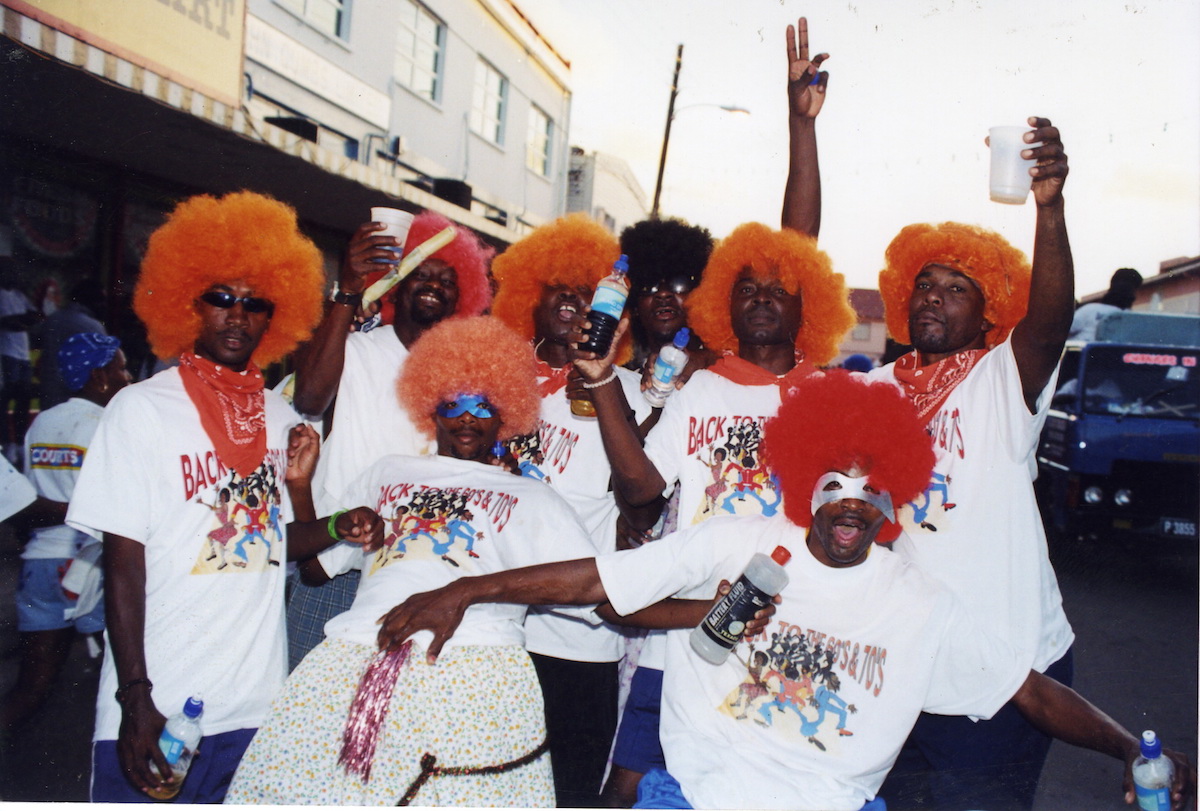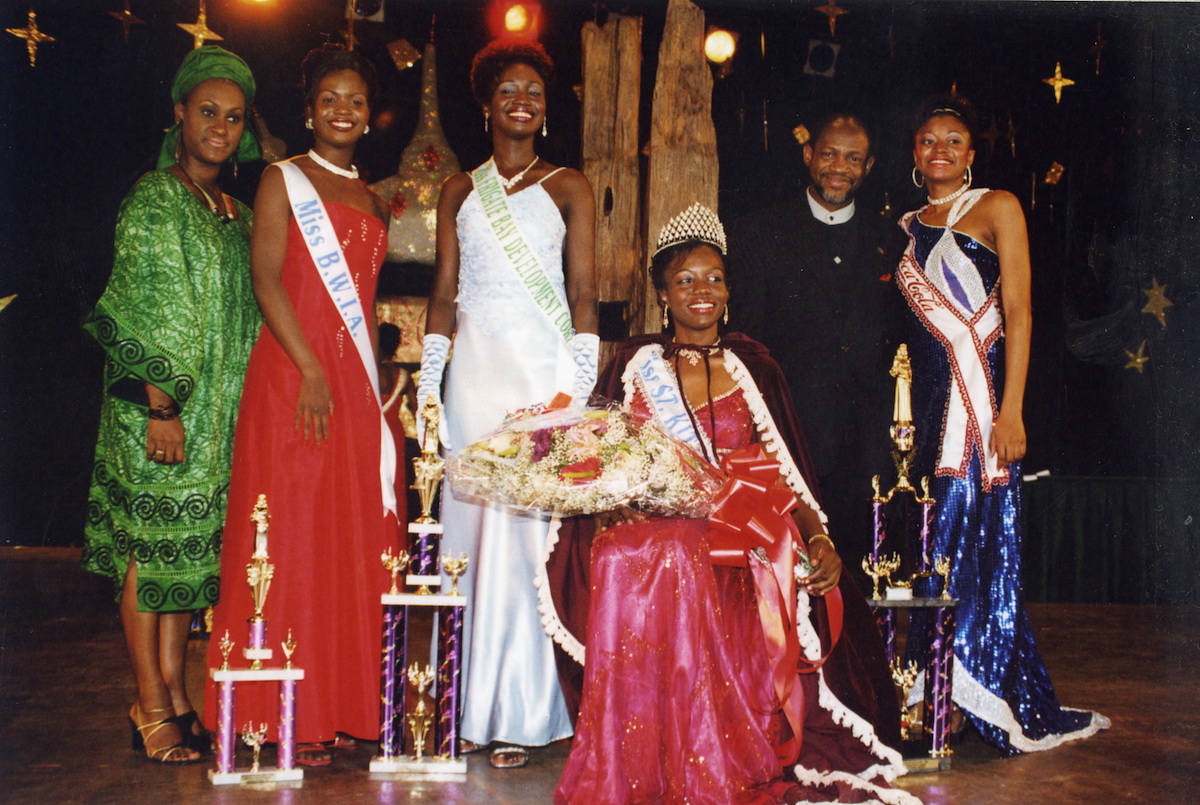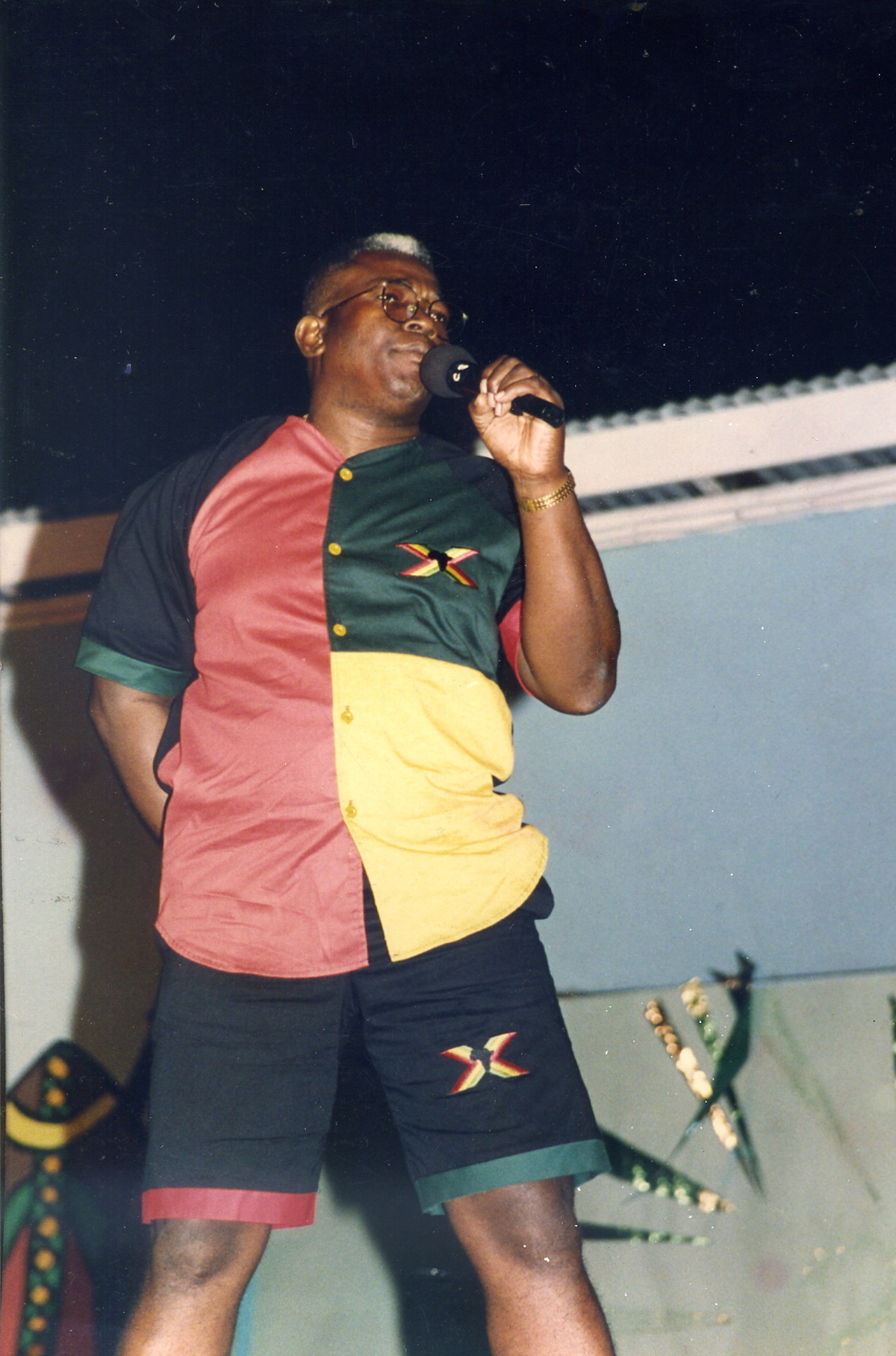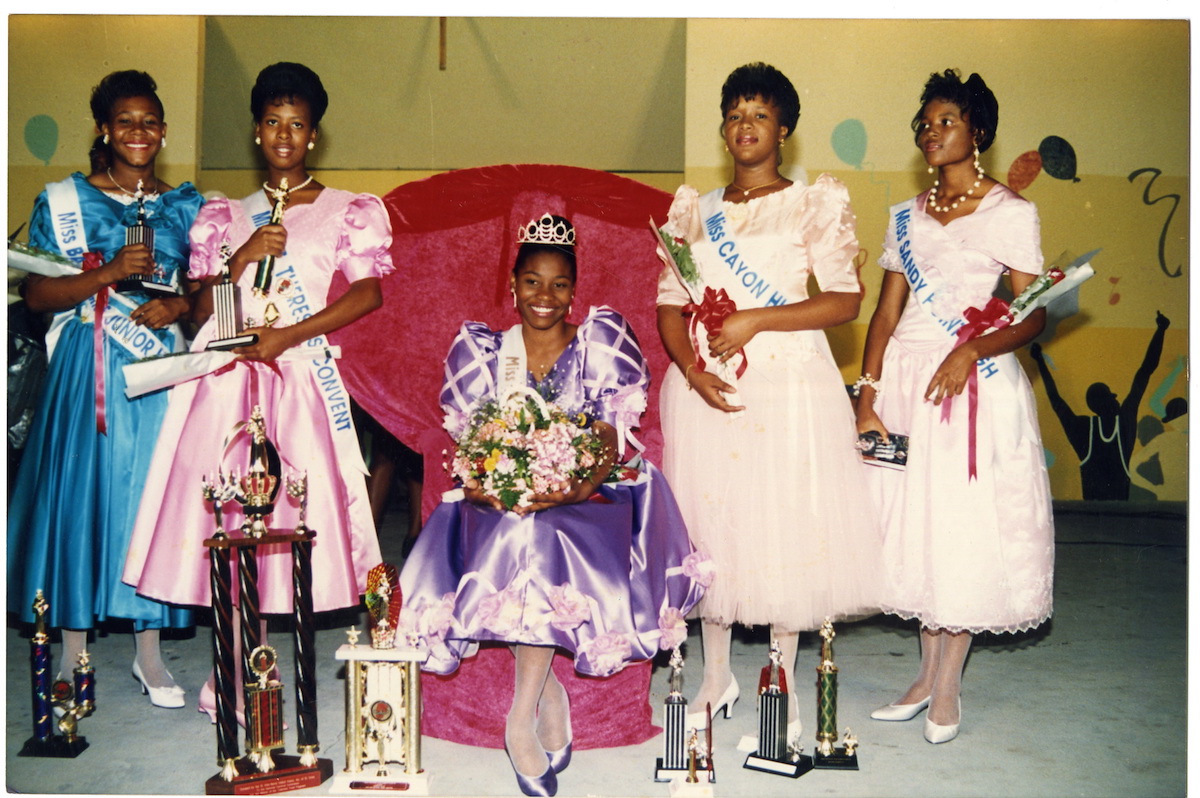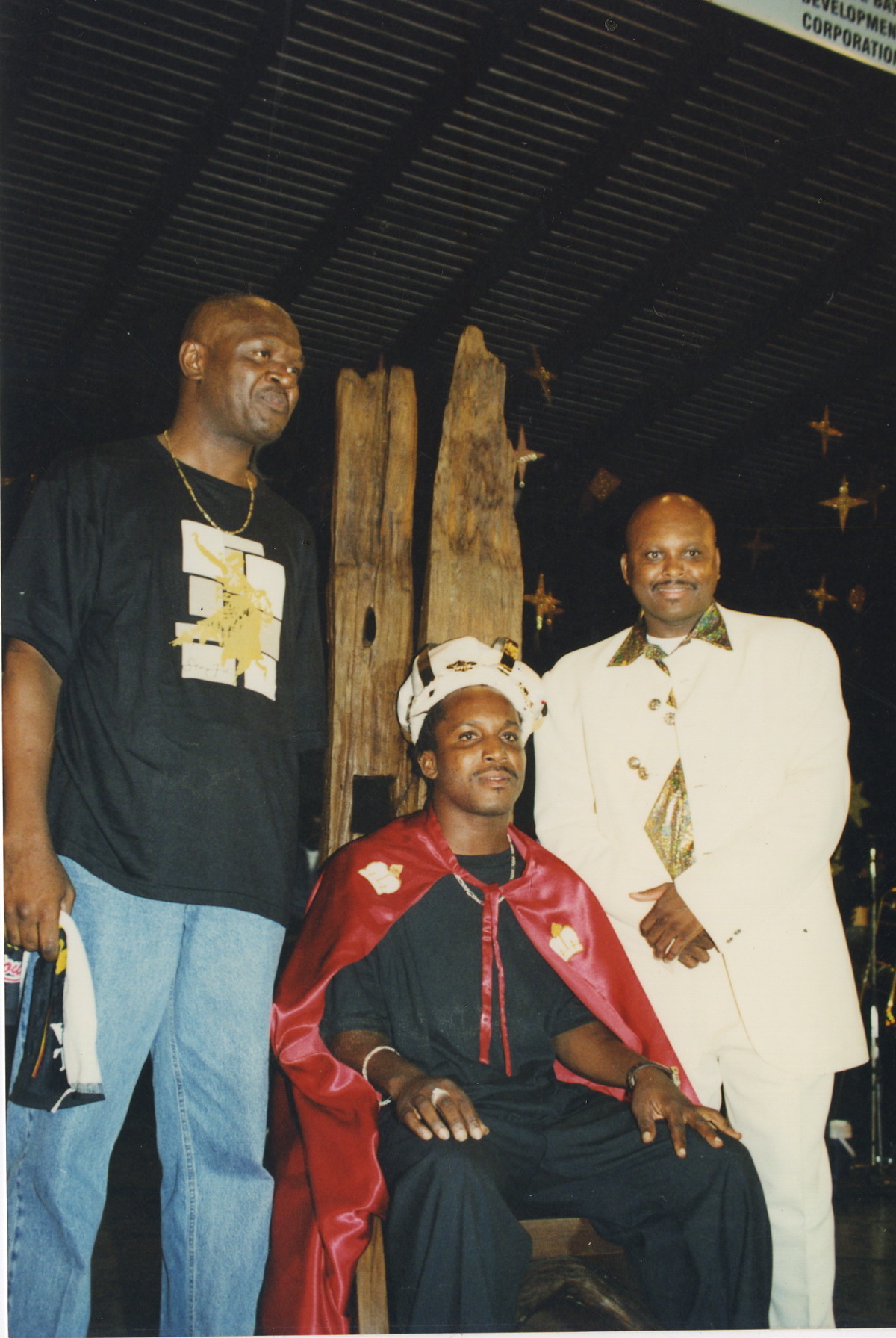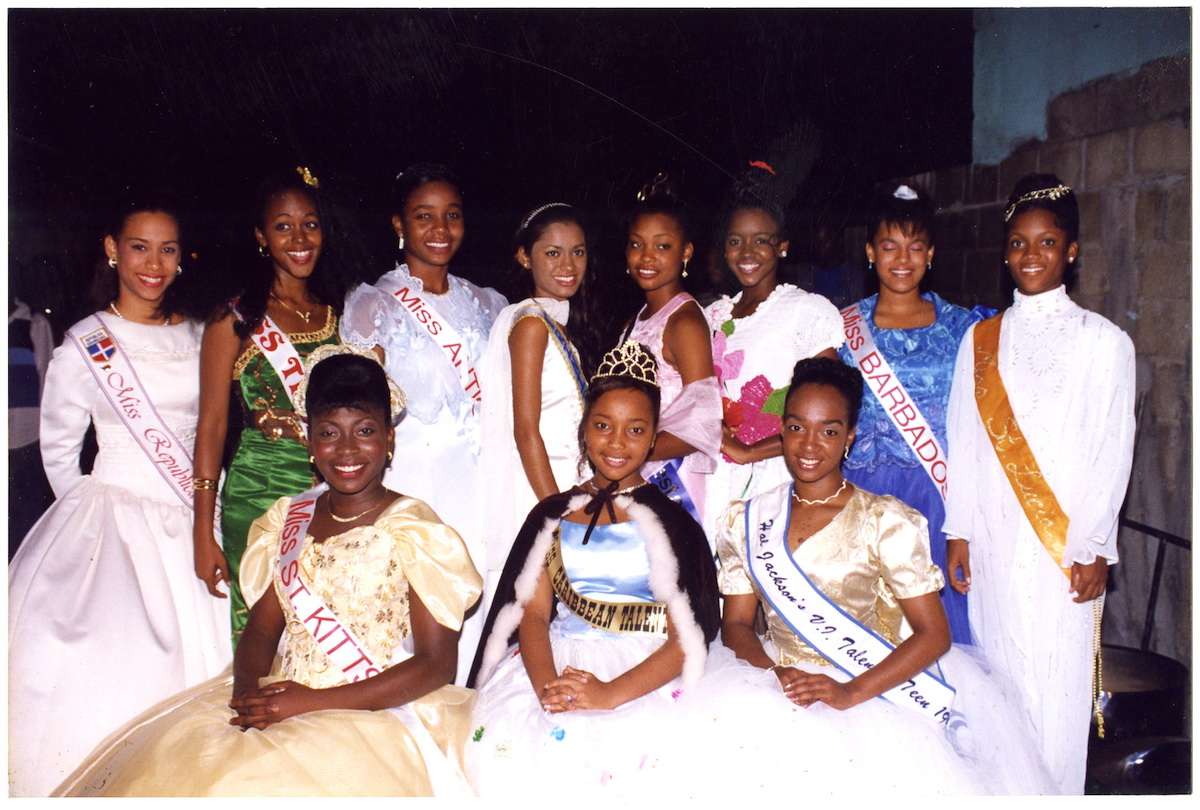Buckley's Strike - 28 Jan 1935 (a time line)
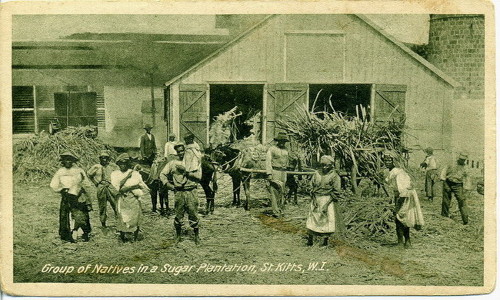
1934, December: The Wade Estates paid their workers a Christmas bonus of 8d per ton of cane cut. Other estates paid only 3d per ton cut. Some estates refused to pay any bonus to their workers.
1935, January: There were cane fires on several sugar estates near Basseterre.
1935, 20 Jan: Estate workers from all over the island attended a Universal Benevolent Association meeting called by its Secretary, Joseph Nathan. He advised them that since there would be no increase in the price of cane for the 1935 crop, the planters would not be in a position to give a wage increase and that the wages in force in 1934 should be accepted. This advice was disappointing to many and some workers left the meeting saying that the UBA had been bribed.
Meanwhile Thomas Manchester attempted to persuade the estate owners to institute an annual bonus and to make their agreement public before the start of the crop. However the planters refused to commit to this idea.
1935, 28 Jan: Cane cutters at Buckley’s estate asked the manager, E.D.B. Dobridge for wages of 1/- per ton. Dobridge refused and the workers went on strike.
The strikers marched to Shadwell Estate and persuaded the workers there to join them. By noon, the marchers numbered between three and four hundred and had arrived at Brighton. Mules and cattle which were harnessed were taken out and the gear damaged to prevent any use being made of the carts. In the early afternoon the march had reached Lodge. The owner, Phillip Todd informed the approaching workers that they were trespassing and told them to leave. Todd was struck down but he called for a shotgun. The marchers attacked him, broke his gun, beat him and forced him and his servants into the house.
At Willettes, the overseer was seized and ordered to produce a bill so that the working gear of the carts could be disabled.
Major Duke and eight armed policemen overtook the march at Estridge, and arrested five of the leaders. The crowd then numbered two to three hundred. It was expected that following the arrests it would disperse but Major Duke was instructed to keep his men on the alert.
1935, 29 Jan: Very few workers reported for work, except at Estridge and Bellevue Estates. Another large demonstration took to the road and headed west. At Saddlers the marchers stopped outside a shop and ordered a labourers, Jonathan Moore to join them. When he refused, he was struck on the head with a metal pipe.
At West Farm Estate workers were ordered to down tools. At 3.00 pm a large crowd invaded Buckley’s yard. Dobridge attempted to warn them off with his shot gun. He fired hitting some of the demonstrators with pellets. The crowd became infuriated. The police arrived on the scene and the strikers demanded that Dobridge and Pond, his overseer, be arrested for shooting at them.
At 5.00 p.m. Major Duke left the area to report to the Governor. He requested the deployment of the Defence Force and the Defence Reserve.
Meanwhile Magistrate Bell went into Basseterre and returned with Rev. Williams of the Moravian Church, Thomas Manchester and Victor John of the Workers League and Clement Malone, a member of the Executive Council. The crowd listened to Manchester’s plea for order and many left with him but a significant number stayed behind.
The Defence Force and the Defence Reserve, the latter carrying live ammunition, were despatched to Buckley’s Estate
At 6.00 p.m. the Governor asked that a warship to be sent to St. Kitts from Bermuda and requested reinforcements from the police force in Antigua. The Riot Act was read. Stones were thrown at the armed forces.
From 6.15 to 7.00 p.m. the armed forces attempted to direct the crowd away from Buckleys on to the main road. The police were unable to control the crowd and after repeated warnings, shots were fired. Three men were killed and eight wounded.
At. 9.30 p.m. all was quiet.
1935, 30 Jan: At. 2.30 a.m. The Lady Nelson arrived in St. Kitts with the additional men from Antigua.
That morning large groups of men were still calling out workers to strike. Cane fields in the vicinity of Basseterre were burnt.
1935, 31 Jan: The HMS Leander arrived in St. Kitts.
THE VICTIMS OF 1935 Labour Riots
DEAD
- Joseph Samuel
- John Allen
- James Archibald
INJURED
- Alfred Rogers
- Cyril Tyson
- William Fowle
- Samuel Woodley
- Ellsworth Selkridge
- Charles Moving
- Olive Allen
- irginia Greaux
- Joseph Williams
Emancipation - 1 August 1834
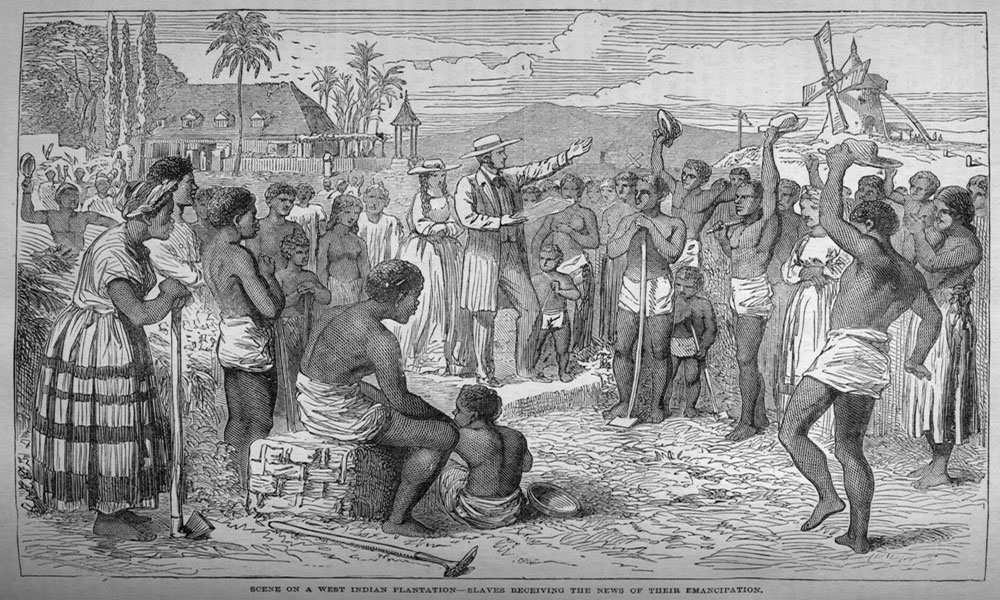
British Enslavement existed mostly in the colonies but the Abolition movement was strongest in Britain. It was there that the laws that limited the trade and introduced the registry of slaves were first passed. The trade in slaves with Africa had been abolished in 1807 and the trade with other slave trading nations ended in 1812 but this had not produced the changes that the Abolitionist had hoped would follow. They continued to press for the end of slavery seeing it as a process that would take time to accomplish. The British Government took the initiative and with the co-operation of the West India interest in London, encouraged progressive improvements in the colonies. These were to include that:
- The enslaved be given religious instruction
- Marriages between enslaved couples to be encouraged and recognized by law,
- Enslaved families would no longer be separated by sale
- The end of brutal punishment – women where not to be whipped and lashes were to be limited to 25 in the case of men.
- Sunday markets were a desecration of the Sabbath and should be held on other days
- Evidence of enslaved witnesses to be admitted under certain conditions,
- The enslaved to be given the privilege of buying their freedom as a reward for thrift and industry.
- Their right to property had to be recognized.
In the West Indies interference from London was met with indignation. The planters said they would reduce productivity and undermine the value of their property. They demanded that they be offered compensation and then amelioration would follow. Being aware that obstinacy might provoke more direct interference, the colonial legislatures conceded on some of these points. While the British Government did not have the resources to enforce its wishes in the Caribbean, the Colonial Office in London, relentlessly exposed abuses undermining the attempts to justify enslavement. In the end it was the Christmas slave rebellion of 1831 in Jamaica that precipitated emancipation. Enslaved workers in Jamaica believed that emancipation had come and that the planters were withholding it. There was violence on both sides with the enslaved receiving the brunt of it. Officials in the Colonial Office were convinced that only complete abolition would preserve peace in Jamaica.
In London, The Reform Act of 1832 resulted in a reformed House of Commons with very few West Indian members. The Colonial Office was faced with a dilemma. On the one hand there was the apprehension that emancipation would provoke bloodshed. Officials were afraid of a repeat of the Haitian Revolution but also sensed that if it was withheld for much longer that too could result in violence. They were also worried that the new House would pass an emancipation law without compensation to the planters and with no security for the colonies. Therefore the Colonial Office took the initiative and declared that amelioration had run its course and that the end of enslavement was necessary to avoid insurrections in the colonies.
Four plans for emancipation were drafted at the Colonial Office. They had to deal with a variety of expectations, from the use of land, to the availability of labour, to the diversities among the colonies, to compensation and a transitional period towards freedom. The final legislation was drafted by James Stephen son of lawyer James Stephen who lived in St. Kitts from 1783 to 1794. He accepted, in principle, the concepts of apprenticeship and compensation first mentioned in other plans but made some changes. In the case of apprenticeship, it was originally to last for 12 year. In his draft it was reduced to six and the amount of compensation was increased from £15 million to £20 million.
The fact that Parliament even contemplated the compensation was a surprise both to to the Colonial Office, which for a decade had operated under the assumption that Parliament’s only concern was reducing expenditure. However following the Napoleonic wars the defense of the concept of property gained ground within the British Government. The idea that property could be taken away without due compensation was abhorrent.
The termination of enslavement in the British empire came about on the 1 st August 1834. The act classified all former enslaved workers as either agricultural (predial) workers or domestic (non-predial) servants. For the agricultural worker, apprenticeship was to end in 1840 while 1838 was the termination date for the domestics. Apprentices were to be permitted to purchase their discharge before the prescribed transition period and employers had to accept a fair payment. The allowances of food, clothing, accommodation and medical service were to continue, In return, apprentice had to give their employers 43 hour a week of unpaid work. Children below the age of six were freed and placed in the care of their mother. If she was destitute, the child was indentured until he/she reached the age of 21. One hundred special magistrates were tasked with the superintendence of apprenticeship and the adjudication of disputes arising out of it.
Although the Colonial Office produced a law to terminate enslavement, it was reluctant to have Parliament interfere in the legislative affairs of the colonies so the Act that came into effect in 1834 established the basic framework of Emancipation. It left to the local legislatures the framing of the rules for Apprenticeship.
Emancipation threatened the social and economic institutions of the Caribbean but those who fought for it were not interested in ending the plantation system nor the social gradations of race and cultural identity in Caribbean society. They, like the West Indian slave holders, believed that Africans and their descendants lacked civilization and therefore needed a strong paternal hand to guide them in the direction of Christian morality.
In St. Kitts, the newly freed apprentices were aggrieved that they had to wait longer for full freedom and many of them refused to work. The authorities were afraid that they would join the ranks of the maroons lead by Marcus of the Woods. The reaction lead to punishments including the deportation of five men to the hulk station Bermuda. It was not an auspicious start for a new era but as the apprentices and their descendants were to discover, it would take much more that a law passed to please the English Colonial Office to change social conditions in the island. There were mind sets that had to be changes that would take time and effort.
The Arts Festival - 18 Aug 1964
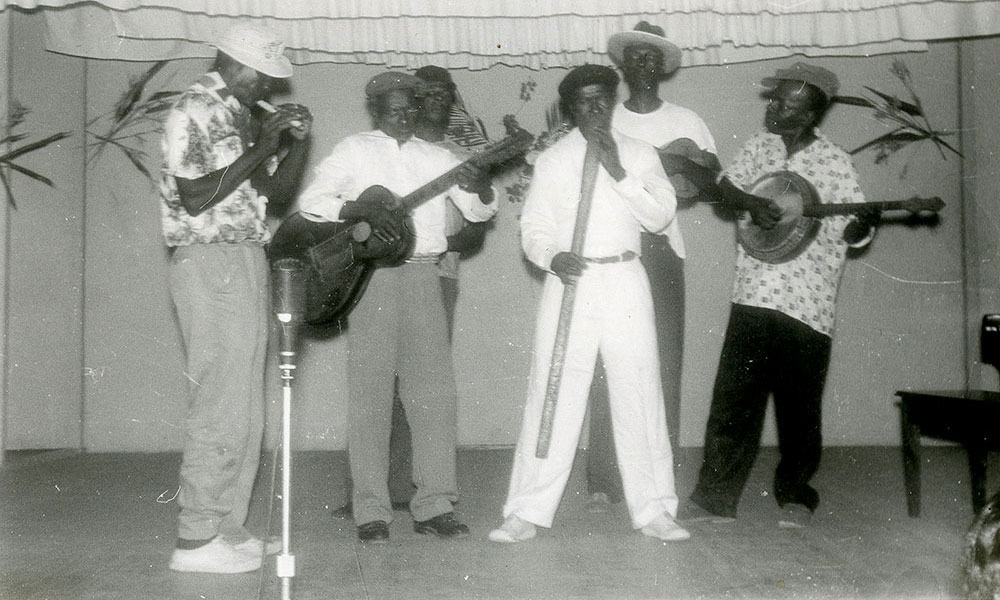
On the 18th August 1964, the Education Centre, now the Basseterre High School, was the venue of “an evening of One Act Plays”. The plays were The Doctor in spite of Himself, by Moliere produced by Eustace John and Sunday Costs twenty-five dollars produced by Aimee Dinzey. This was the beginning of the first Arts Festival in St. Kitts that was to last for 15 days.
The idea of an Arts Festival came from Chief Minister Paul Southwell who was fascinated by the work of William Shakespeare. 1964 marked the 4th centenary of the birth of the English playwright. His playTwelfth Night, under the direction of Noel Vaz of Jamaica was performed for three consecutive nights at the Factory Social Centre. Southwell himself played the Duke Orsino.
The Festival showcased the talents of a number of persons in the community, from actors, to set designers, to musicians, to dancers. There was an evening of dance which featured dances from England, the United States and various parts of Latin America as well as a number of local creations prepared specifically for the Festival. A musical evening consisted of piano, steel band, string band and choirs competitions. In the Elocution Contest the Convent High School won four prizes and the George Moody Stuart School and the Girls High School won one prize each
The Jamaica Military Band dressed in the zouaves uniform of the West India Regiments, played at the opening ceremony. The presence of the band was made possible by the government of Jamaica. Also present was the John Laviscount Combo from Antigua.
There was a craft exhibition that showcases metal and wood furniture as well as items made out of coconuts, straw and shells and a flower show.
At the opening day of the Festival both Chief Minister Southwell and Minister of Social Services, J N France, both expressed hope that the Festival would not be the last. It was not. Other festivals have taken place in St. Kitts since 1964. However the first one remained and still is the inspiration for those that followed.
Independence 19 September 1983
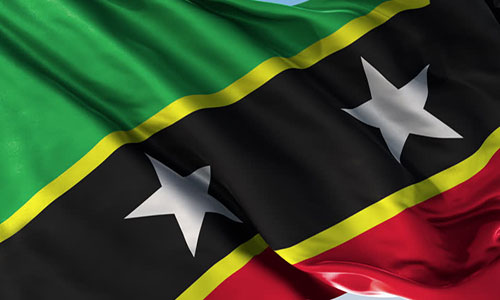
Statehood, granted in 1967 was viewed by all former territories as a transitions stage. The hope of an one independent West Indian nation had been crushed in 1962. It became necessary for the individual states to work out their own future.
In the elections of 1975 the Labour Party obtained a mandate to seek independence from Britain. Discussions started in earnest in 1976 but an effective resolution of the Anguilla problem could not be found. In 1979 a new Labour administration under C.A. Paul Southwell accepted the de facto separation of Anguilla. However the Nevis Reformation Party which was in opposition in the State Legislature, would not agree to independence with St. Kitts. Following the 1980 election, the People’s Action Movement and NRP formed a coalition and proceeded to finalise negotiations regarding the terms under which independence would be granted.
St. Kitts-Nevis was granted Independence from Great Britain on the 19th September 1983. A twin island federation was created. The new constitution gave Nevis its own local administration and the option to leave the federation following a referendum on that island. St. Kitts was to be administered only by the Federal Government. The responsibility for both internal and foreign affairs was placed in the hands of citizens of the State and their representatives.
Carnival - New Years Day
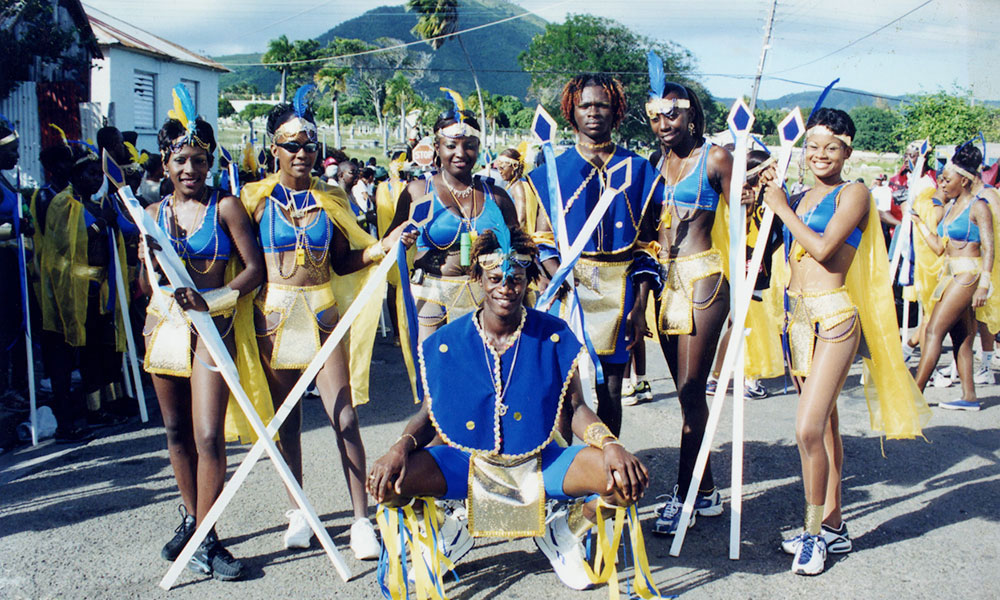
In June 1957 Basil Henderson, Major L.N Alphonso, Tony Lawrence, Leroy Coury, Alexis Knight, E Vanterpool and Al Barker formed a temporary committee entrusted with the planning of St. Kitts’ first Carnival. It was felt that a Carnival along the lines of the Trinidad one would help the economy and give visitors something to look forward to. By the end of that year St. Kitts had its first queen show, Calypso Show and street parade full of colourful troupes. The first one was a resounding success and soon plans were underway to make it an annual event.
During the 1960s what was a time of fun, relaxation and entertainment became a socially and politically fraught situation with the Christmas festivities and Soul Carnival vying for the attention of the public. It was this that lead, in 1971, to the reorganization of Carnival. It became a national event overseen by a committee under the Minister responsible for Culture.
From the very start the whole issue of the timing of Carnival was contentious. There were those who felt that Christmas time was not appropriate. However in St. Kitts the tradition of Christmas sport was a strong one and Carnival was seen as a development on that. So every December, St. Kitts continues its tradition of masquerading and playing Mas with the major events falling in the last week of December.. The Carnival parade on New Year’s Day is a street party that rings in the coming year with colour, music, merriment and exuberance often on a sunny day under a clear blue sky.
National Archives
Government Headquarters
Church Street
Basseterre
St. Kitts, West Indies
Tel: 869-467-1422 | 869-467-1208
Email: NationalArchives@gov.kn
Website: www.nationalarchives.gov.kn
Follow Us on Instagram




